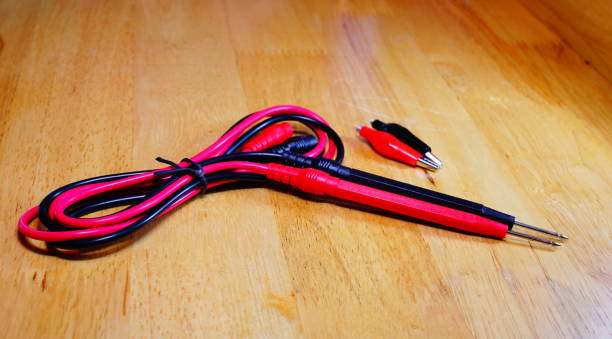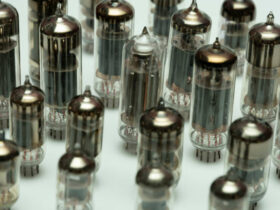Every musician knows that sound quality doesn’t rely only on the guitar or the amplifier — the cable between them is just as critical. The Ovation to amp cable plays a vital role in preserving tone clarity, eliminating noise, and ensuring that every strum, note, and chord sounds exactly as it should.
Ovation guitars are famous for their round-back bodies and active electronics, but without the proper cable connection to your amp, even the best preamp can sound dull or noisy. In this 2025 guide, we’ll explore everything about the Ovation to amp cable — from types, features, and connection tips to maintenance and troubleshooting. Whether you’re a performer, sound engineer, or home studio artist, this guide will help you achieve crystal-clear tone every time.
Understanding the Ovation to Amp Cable
What Is an Ovation to Amp Cable?
An Ovation to amp cable is a specialized audio link designed to transmit your guitar’s signal from its output jack to an amplifier or sound system. It typically uses a ¼-inch TS (Tip-Sleeve) plug — the same as standard instrument cables — but must match the Ovation’s active pickup system for best results.
Why Ovation Guitars Need Quality Cabling
Ovation guitars use built-in preamps that output an amplified signal. That means the Ovation to amp cable doesn’t just carry the sound; it must also handle the guitar’s voltage level accurately without adding noise or distortion. Using a low-grade cable may result in:
-
Loss of high frequencies (dull tone)
-
Hum or buzz from poor shielding
-
Weak connections causing intermittent signal
To protect your tone, a strong, low-capacitance, well-shielded cable is essential.
Types of Ovation to Amp Cables
1. Standard Unbalanced ¼-Inch Cable
The most common Ovation to amp cable is the unbalanced TS type. It has a tip (signal) and a sleeve (ground). This cable works perfectly for short distances — ideal for stage performances or practice sessions.
2. Balanced TRS Cable
If your Ovation model supports a balanced output (some higher-end ones do), you can use a TRS cable (Tip-Ring-Sleeve). This configuration reduces noise, especially for longer runs, making it ideal for live shows and studio environments.
3. XLR Cable
Some Ovation preamps include an XLR output, allowing direct connection to a mixing console or powered speaker. In this case, your Ovation to amp cable may be XLR-to-XLR or XLR-to-¼-inch, depending on your amp’s input.
4. Premium Custom Cables
Many professional musicians now prefer premium Ovation to amp cables that use oxygen-free copper conductors, dual shielding, and gold-plated connectors. These ensure low capacitance, durability, and the purest signal transmission possible.
How to Choose the Best Ovation to Amp Cable
1. Cable Length
Choose the shortest length that comfortably reaches from your guitar to the amplifier. Long cables increase capacitance, reducing treble and clarity. For stage use, 10-15 feet is ideal for most Ovation to amp cable setups.
2. Shielding Quality
Proper shielding blocks electromagnetic interference from power lines, lights, and wireless devices. Look for cables with braided or spiral copper shielding and, if possible, foil protection for studio-grade noise rejection.
3. Conductor Material
The best Ovation to amp cables use oxygen-free copper (OFC) for its excellent conductivity and resistance to corrosion. Avoid cheap alloys that can degrade signal strength over time.
4. Capacitance Rating
Capacitance affects tone brightness. The lower the capacitance (measured in pF per foot), the clearer the signal. Choose cables with a rating below 30 pF/ft for optimal Ovation performance.
5. Connectors
High-quality connectors (like Neutrik or Switchcraft) ensure secure connections. A reliable Ovation to amp cable should feature strong strain relief and tight plug fittings to avoid static or signal loss during gigs.
6. Flexibility and Durability
If you perform often, your cable must survive constant coiling, stepping, and movement. Go for rugged, flexible outer jackets made of thick PVC or braided nylon.
Step-by-Step Connection Guide
Follow these steps for a perfect setup using your Ovation to amp cable:
-
Inspect both jacks — make sure your guitar and amp ports are clean and free from dust.
-
Insert the plug gently into your Ovation’s output jack until it clicks securely.
-
Connect the other end to your amplifier or audio interface input.
-
Power on the system and set your amp volume to a moderate level.
-
Test signal strength by plucking strings and adjusting gain for clarity.
Always connect the Ovation to amp cable before turning the amp on to prevent loud pops that could damage speakers.
Common Problems and How to Fix Them
1. Buzzing or Humming Noise
-
Cause: Poor shielding or proximity to power lines.
-
Fix: Use a shorter, better-shielded Ovation to amp cable or reroute it away from power cables.
2. Signal Dropout
-
Cause: Loose or damaged connectors.
-
Fix: Re-solder connections or replace plugs. Always test continuity using a multimeter.
3. Dull or Weak Tone
-
Cause: High cable capacitance or excessive length.
-
Fix: Replace with a low-capacitance cable under 15 feet.
4. Crackling Sounds
-
Cause: Dirty jacks or oxidation on plugs.
-
Fix: Clean connectors with contact cleaner and keep plugs covered when not in use.
Professional Tips for Enhanced Performance
Use a Right-Angle Plug
Many Ovation models have side-mounted jacks. A right-angle connector prevents strain and reduces risk of accidental unplugging — extending your Ovation to amp cable’s lifespan.
Secure Your Cable on Stage
Loop your cable through your guitar strap to prevent sudden tugs. This simple habit can save both your jack and cable during live shows.
Avoid Tight Coiling
Wrap cables using the over-under technique. This method prevents internal wire twisting and extends your Ovation to amp cable’s life by years.
Store Properly
Keep your cables in a cool, dry environment, away from direct sunlight or humidity. Moisture can corrode plugs and degrade performance.
Best Ovation to Amp Cables in 2025
While preferences vary, here are a few top-rated options for 2025 according to music gear experts:
| Brand | Model | Type | Key Feature |
|---|---|---|---|
| Planet Waves | American Stage | TS ¼” | Low capacitance & durable plugs |
| Mogami Gold | Instrument Cable | TS ¼” | Studio-grade clarity |
| Fender Deluxe | Series Instrument | TS ¼” | Coiled option with strain relief |
| Ernie Ball | Braided Cable | TS ¼” | Flexible & stylish design |
| Hosa Pro | TRS Balanced | TRS ¼” | Ideal for long balanced runs |
Each of these models provides excellent tone preservation and reliability — key features for your Ovation to amp cable setup.
Building Your Own Ovation to Amp Cable
If you’re handy with a soldering iron, making your own cable can be rewarding and cost-effective. Here’s how:
-
Cut the cable to desired length.
-
Strip the outer jacket and expose the shield and core wire.
-
Tin both conductors with a small amount of solder.
-
Attach core to tip and shield to sleeve on both ends.
-
Use heat-shrink tubing for insulation and strain relief.
-
Test with a multimeter to ensure correct continuity and no shorts.
This DIY method allows customization — you can use higher-grade materials for a premium Ovation to amp cable that rivals commercial models.
Troubleshooting Ovation Preamp & Cable Compatibility
Some Ovation guitars use active preamps that can introduce hum or impedance mismatches with certain amplifiers. If this happens:
-
Use a DI (Direct Input) box between the guitar and amp for balanced conversion.
-
Try a ground-lift switch on your DI to remove hum loops.
-
Use balanced TRS or XLR cables if your Ovation supports them.
Matching impedance correctly ensures your Ovation to amp cable delivers a clean, strong signal every time.
Maintenance Tips for Long Cable Life
-
Wipe down after each gig to remove sweat and dirt.
-
Avoid stepping on the cable, especially near the plug ends.
-
Label your cables for quick identification during setup.
-
Check for kinks or splits before each use.
-
Replace plugs at the first sign of looseness or static.
Consistent maintenance ensures that your Ovation to amp cable stays performance-ready for years.
The Science Behind Cable Performance
Sound waves become electrical signals through your guitar’s pickups, and the Ovation to amp cable must transport that signal with minimal loss. Factors like capacitance, resistance, and inductance shape how faithfully your tone travels.
Premium cables use materials that minimize resistance, meaning your highs stay crisp and your lows remain tight — especially important for acoustic-electrics like Ovations, where natural timbre is everything.
Why Investing in a Quality Cable Pays Off
A $20 cable may sound fine today, but over time, poor soldering or weak shielding can cause problems mid-show. Investing in a reliable Ovation to amp cable is an investment in consistent performance, peace of mind, and better tone. Even the best amplifier can’t fix what a cheap cable ruins.
Conclusion: Perfect Your Sound Chain
The Ovation to amp cable is more than just a link — it’s the lifeline of your tone. Whether you’re performing live, recording, or rehearsing, the right cable preserves the unique sound Ovation guitars are known for.
Choose wisely: go for low capacitance, strong shielding, solid connectors, and proper length. Maintain it well, and you’ll enjoy noise-free, vibrant sound for every performance.
In 2025 and beyond, musicians understand that clarity starts with connection — and your connection begins with the Ovation to amp cable.








Leave a Reply